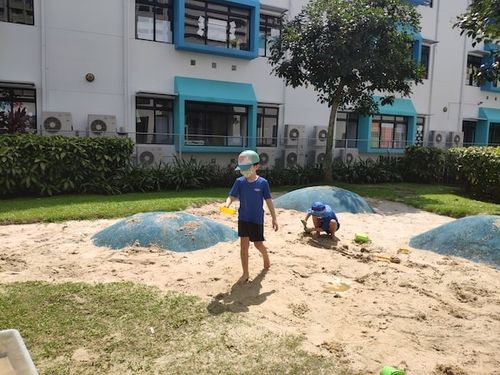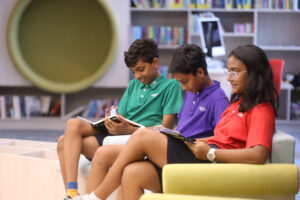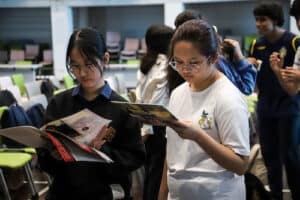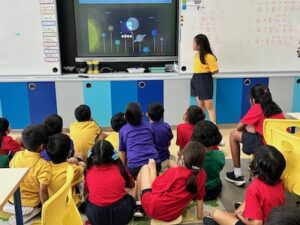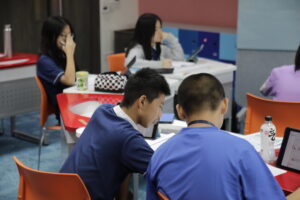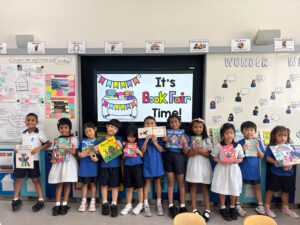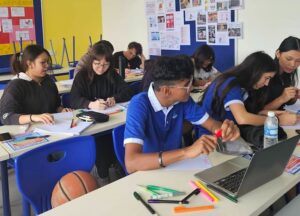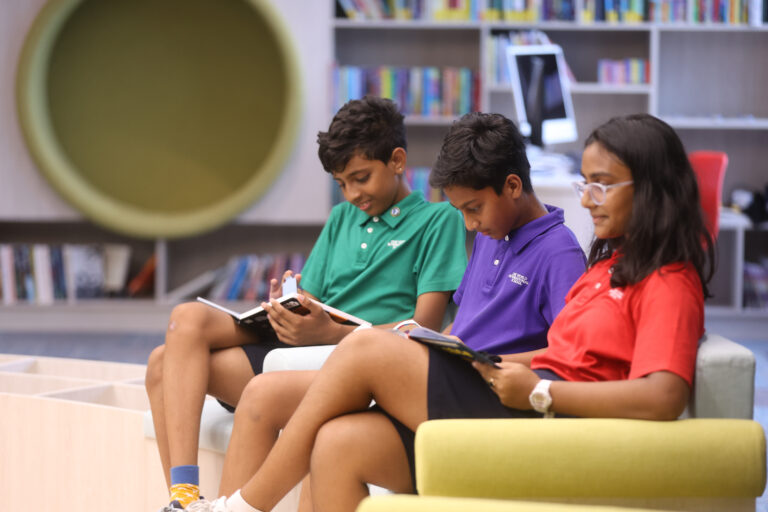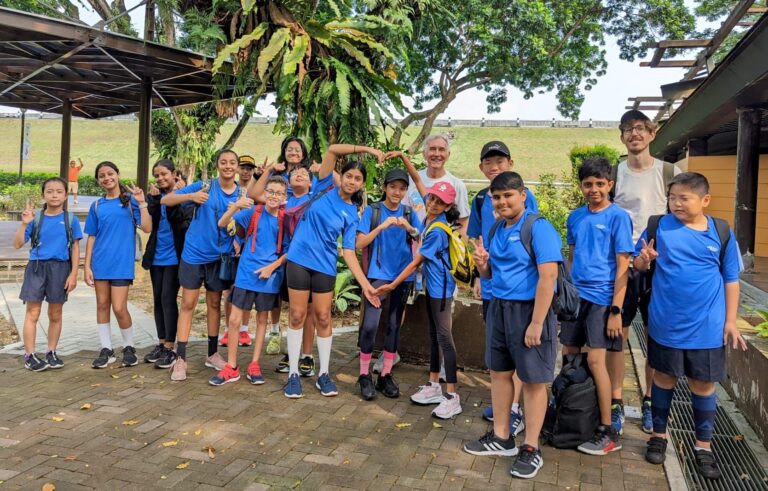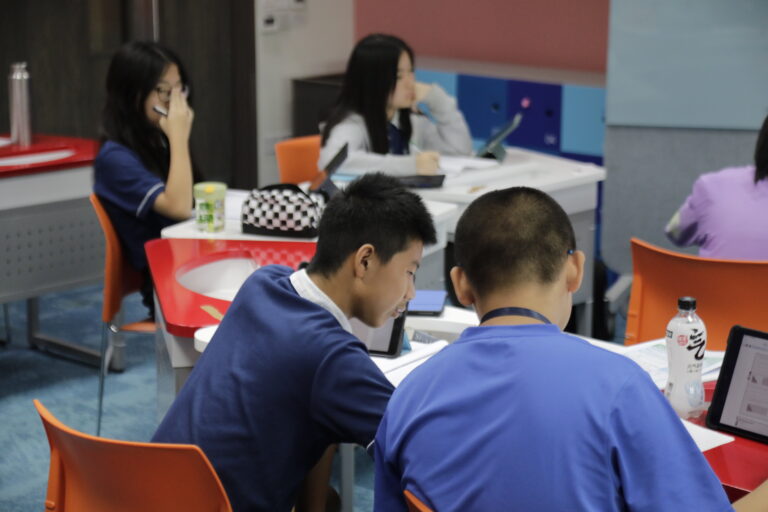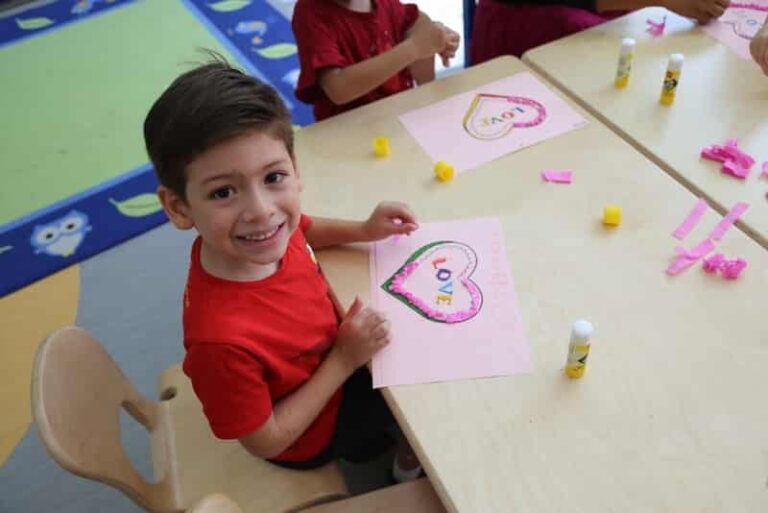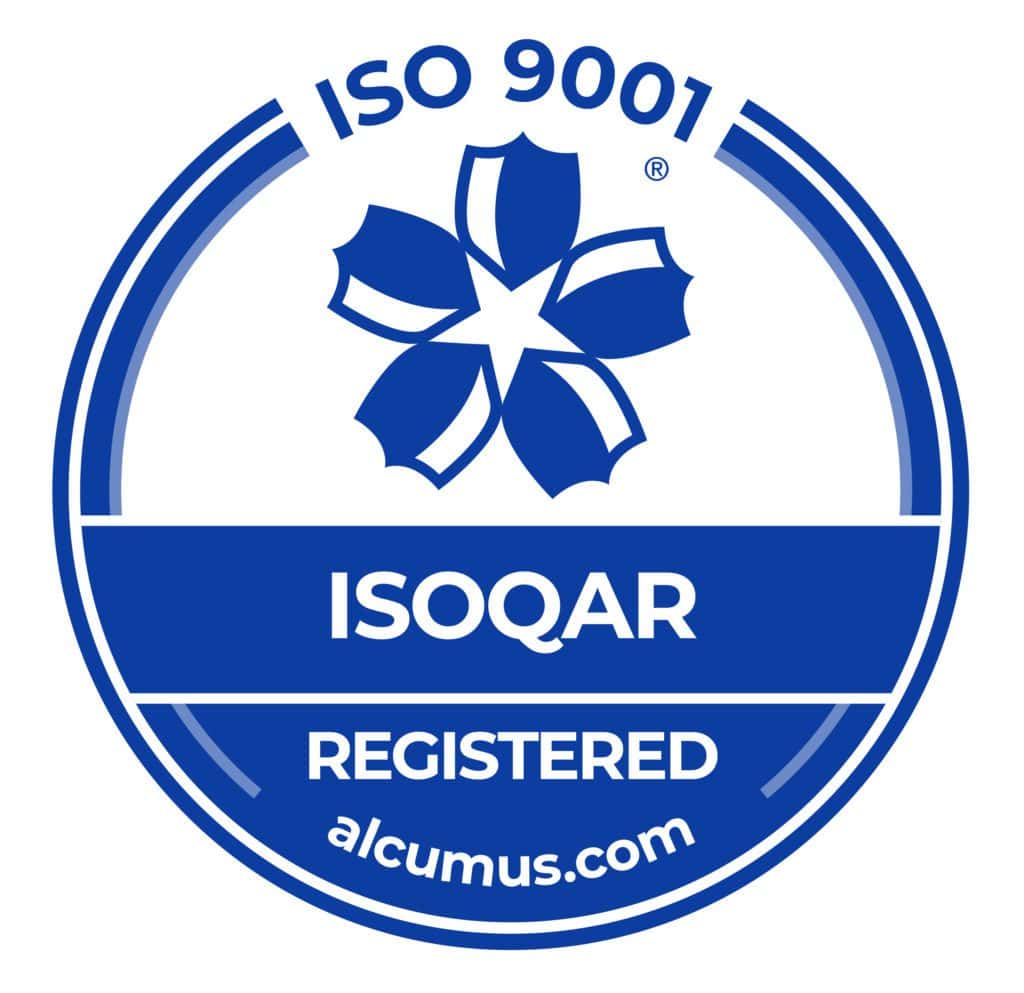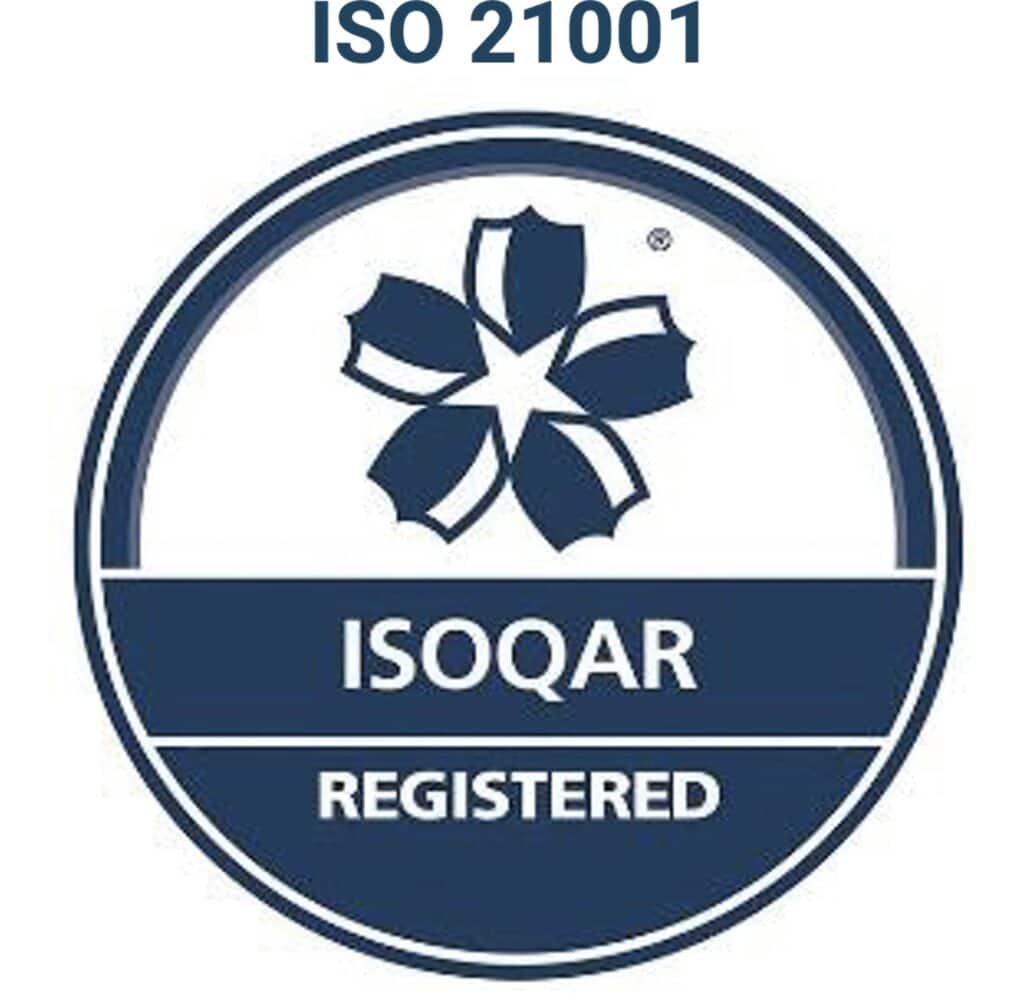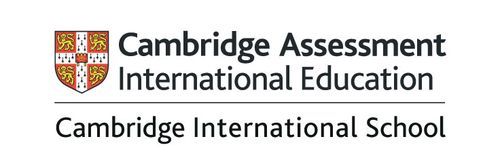Here at OWIS, we are passionate about play-based learning in the Early Childhood grades. There are several different forms of play – such as sensory, imaginative, physical, constructive, social, and solitary – and in terms of our facilities and curriculum, we ensure that young children have the time to enjoy all of these in some form and as per their choice.
We spoke to a few teachers of the younger grades in our school to learn more about what play-based learning looks like in reality and what the benefits are.
Sakshi Singh, Early Childhood 3 Teacher, strongly believes that children learn best through play and Early Childhood shouldn’t be all about paper and pencil.

“Play fosters collaboration, creativity and problem solving. Engaging in make-believe and imitating the everyday activities of adults empowers children to take risks and learn through trial and error.
Play can even foster literacy and Maths skills. For example, students running a pretend restaurant may devise menus and devise ways for ‘customers’ to pay for their food.
While play can be difficult to define, it has many characteristics that everyone can agree on. Play is joyful, engaging and socially interactive. As children participate in imaginary scenarios, they incorporate a variety of different skill sets and are deeply involved in what they are doing.
At both our campuses, we have designed our learning spaces and resources to provide ample opportunities for play-based learning for our Early Childhood grades. Our classrooms are free-flow, which allows children to socialise with the teachers and each other, and there are plenty of educational toys to hone children’s cognitive, physical, socio-emotional and motor skills. While OWIS Nanyang has a sand pit and outdoor playground, OWIS Suntec has a discovery center and large indoor spaces which young children thoroughly enjoy.

Min Joo Cho (Eileen), our Early Childhood 2 Teacher, says that play-based learning progresses in a levelled and age-appropriate manner as the children move from Early Childhood 1 to 3.

“In Early Childhood 1 and 2 classrooms, our students can be observed playing throughout the day (unless they are having the whole group focused sessions, including specialist classes). There are different learning provocations that are carefully designed by the class teachers with resources for the students to choose. Each provocation is prepared for the students to build their skills, including language and Maths, individually or in groups.
We also set up multi-sensory areas where our students build basic concepts. For example, they build their gross and fine motor skills by using their fingers or tools such as tweezers and pipettes. While scooping, pouring, measuring and comparing, the students are building their pre-Maths skills.
In Early Childhood 3, they still have unstructured playtime just like the younger classes, but we also see more purposeful, structured play. This means the classroom areas are set as centres where the students have tasks to complete through playful learning engagements. The students, in groups or individually, participate using given resources while the teachers sit with them, guiding them on how to play the game or engage in the tasks till they are able to do so independently.”
At OWIS, these playful learning engagements have a dual purpose – they foster important skills in children and they also serve as assessment opportunities to find out where each student is in their learning and to provide support if it is needed.
As the students move from Early Childhood to Primary School, we closely consider their developmental needs in the transition process. Play-based learning evolves into inquiry-based learning. While the exploration and agency are still there, they are directed in purpose more towards learning that is centred around the Unit of inquiry.
Syahira Chishty, who teaches Primary Grade 1, says that hands-on, inquiry-based learning becomes the evolved version of learning through play and this is a vital aspect of the IB PYP curriculum.

“Hands-on learning is an important part of a child’s development. Through the use of educational toys, children learn many different skills they will need in their lives, such as cause and effect, how to play with others by sharing and understanding compromise, and conflict resolution. It also helps to develop their fine and gross motor skills.
As Grade 1 is a transitioning grade for students, learning through play is still a vital aspect of our curriculum. We incorporate this through Maths and English games and sometimes even dress-up days.”
If you would like to know more about how we implement play-based learning at our campuses at Nanyang and Suntec in Singapore, please sign up today for a virtual tour. We look forward to seeing you there!
